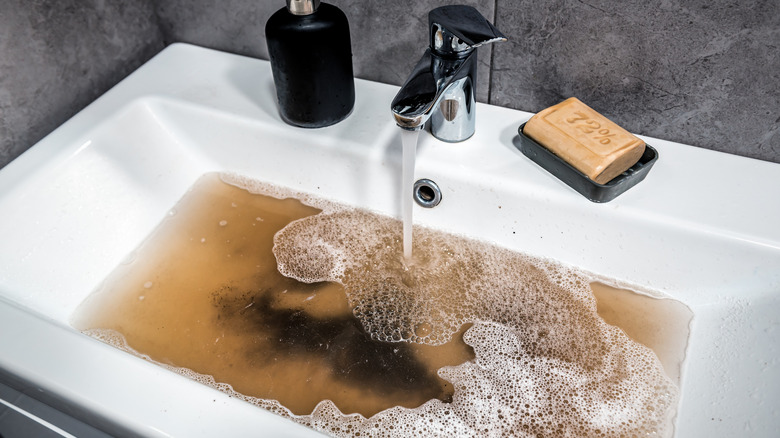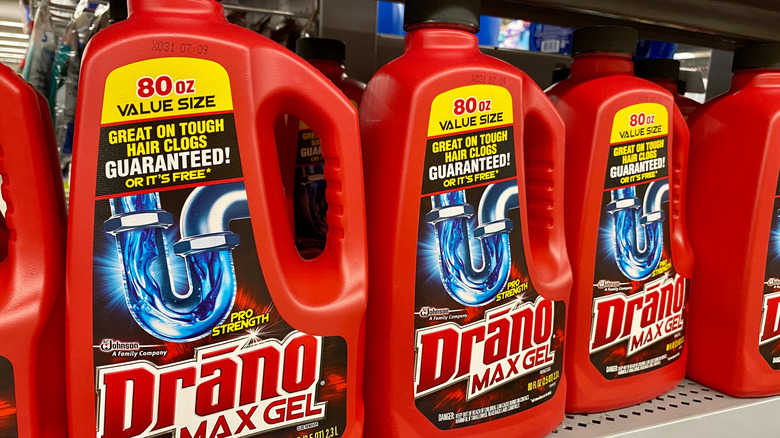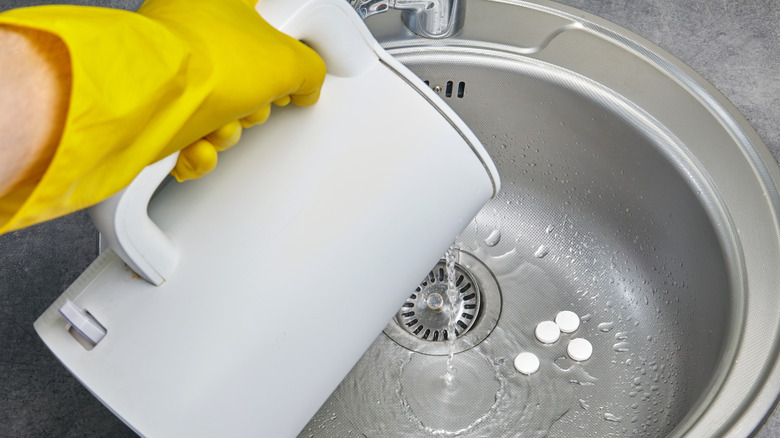The Worst Ways To Clean A Sink Drain (& A Better Alternative To Try)
Having a clear and efficient drain system makes home sanitation, personal hygiene, and cooking so much easier. You can quickly feel the effects of a stubborn clog — nasty smells from decaying food, slow drains, very loud gurgling noises, and, in worse cases, pests. Therefore, you may be anxious to clear your clog ASAP with items you already have. However, homeowners should understand some of the worst ways to clean a sink drain before you try to handle it on your own and waste money or damage your pipe network.
You have several options in the chemical drain cleaner world, from Drano to Liquid Plumr, but their dissolving action may not stop at the clog — eating through a pipe. And while vinegar can be a versatile cleaning tool, and there are many clever ways to use baking soda, like stain removal and deodorization, they can create a big mess, and the combination is no match for tough or deep clogs.
Consider using baking soda by itself, letting some sit in the drain for a few minutes, and pouring water down afterward. Combine it with a natural method that involves plain boiling water as long as you don't have plastic pipes, slowly adding the water from a kettle or pot. Be mindful of sink material and only add the boiling water directly into the drain to avoid damaging the basin. Don't forget a plunger works beyond your toilet, and a trained plumber is only a call away.
Methods you should avoid
Before you reach for that store-bought drain cleaner, stop and think about the damage it can do to your pipes and septic system. Sure, a bottle of any brand may only cost about $13 to $22, but replacing corroded pipes will do far more damage to your home budget, with the average cost to replace a pipe being $371 to $2,133. These cleaners damage pipes by eating away at enamel, and if you want to keep all of your copper pipes corrosion-free, it's the last option you should use.
Thanks to the inclusion of sulfuric acid, lye, or caustic soda in their ingredient list, various chemical cleaners can eat through pipes, seep into your soil, and further contaminate the local water supply — affecting the community and local wildlife. Your home air supply may also suffer from a release of toxic fumes that can irritate your eyes and skin while creating respiratory problems.
Due to the acidic nature of vinegar and baking soda's abrasive qualities that allow them both to clean and break down grime, they sound like a good solution for a naturally unclogging your sink. In reality, the fizzing reaction may only help with a small blockage that isn't too shallow. Using too much baking soda and vinegar together can create a super foamy overflow onto the countertop. Plus, there is the potential for damage to older pipes due to the creation of carbon dioxide gas — if it builds up in the pipe, it can cause cracks and leaks.
Better alternatives to use
If you are looking for all-natural ingredients you should use in place of those harsh chemicals, consider using lemons in cohesion with boiling water and baking soda. Loosen up the buildup with the hot water, pour 8 ounces of baking soda down the drain, and follow with 8 ounces of lemon juice. Borax can also break down mildew, grease, oils, and fat. A simple solution combines one part borax with four parts boiling water. Pour it down the drain and flush with hot water after 15 minutes.
What about tools you can safely use? Thanks to its sucking mechanism, your clogged sink may just be the most important place to use a plunger. Start the sink plunging process by removing lingering debris and the stopper. Then, if the sink isn't already filled with water, add a few inches for the plugger to work properly. Using a rolling technique — pushing it down on one edge of the drain and rolling it forward to cover the entire opening — creates a tight seal effect for you to begin plunging.
When your drain status is in doubt, call a plumber to check it out. Trained professionals can quickly handle a clogged drain and diagnose a deeper problem. For example, a small crack in your pipe can allow a tree root to enter and grow deeper. Your local professional can send tools like a camera through the drain to check for signs of roots or other obstructions. You can buy a plumbing snake, but your plumber has the training you don't to prevent pipe damage, injury, and inefficient cleaning.


